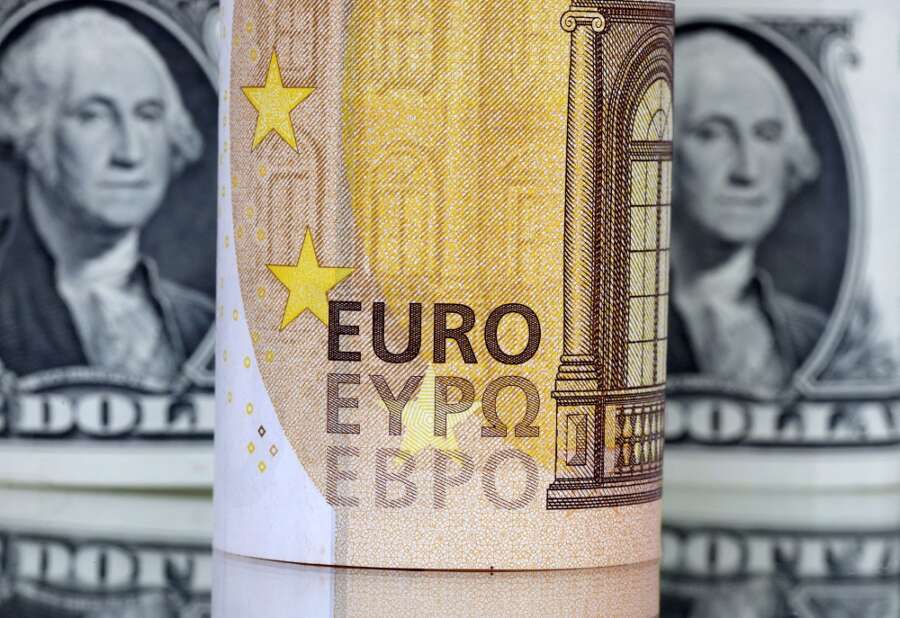
By Amanda Cooper
LONDON (Reuters) -The dollar hovered near a nine-month low against the euro and surrendered recent gains against the yen on Tuesday, as traders weighed the risks of a U.S. recession against the outlook for Federal Reserve monetary policy.
Euro zone data on Tuesday reinforced the view that the economy is surviving a winter of intense price pressures reasonably well, analysts said.
The U.S. dollar index – which measures the greenback against a basket of six major currencies, fell 0.1% to 101.93, heading back towards the 7-1/2-month low of 101.51 reached last week.
“The U.S. is no longer the cleanest shirt in the global economic laundry,” said Ray Attrill, head of foreign-exchange strategy at National Australia Bank, who expects the dollar index to fall to 100 by end-March and the euro to rise to $1.10.
“That’s integral to our bearish U.S. dollar view, that the U.S. is not going to be the global growth leader.”
Money market traders see only two more quarter-point rate hikes by the Fed to a peak of around 5% by June, before it starts cutting rates later in the year. The Fed itself has insisted it still has 75 bps of increases in the pipeline.
By contrast, the euro has gained nearly 0.8% in the last week, lifted by a barrage of European Central Bank officials signalling that tackling inflation is going to require more rate rises than markets currently anticipate.
Surveys on Tuesday showed euro zone business activity made a surprise return to modest growth in January, and service-sector activity in Germany expanded for the first time since June, although price pressures remained sticky.
“There is probably enough in there to cement another 50 basis points in increases from the ECB,” TraderX market strategist Michael Brown said.
The euro, which traded around its highest since last April on Monday, was last flat against the dollar at $1.8725, narrowly down from a session high of $1.0898.
Meanwhile, ECB President Christine Lagarde on Monday reiterated that the central bank will keep raising interest rates quickly to tame inflation, which is still more than 5 times its target rate of 2%.
Elsewhere, the dollar fell 0.4% to 130.18 yen, breaking a two-day rally.
Last week, the dollar fell as low as 127.215 yen, its weakest since May, before a Bank of Japan policy review as investors bet the BOJ would begin to end its stimulus programme. The BOJ, however, left policy unchanged, giving the dollar some respite.
But analysts believe a shift by the BOJ will happen sooner, rather than later, as policymakers make tweaks to their yield curve control (YCC) mechanism, which pins short-term rates at -0.1% and keeps 10-year yields in a band around zero.
“Clearly, the market regards the YCC policy as well past its use-by date, and it’s only a matter of time – and probably months rather than quarters – until the BOJ sounds the death knell on it,” said NAB’s Attrill, who predicts dollar-yen will decline to 125 by end-March.
“The era of yen weakness is rapidly falling behind us.”
The more volatile G10 currencies edged up against the dollar. Sterling and the New Zealand dollar were both last up 0.2% at $1.2399 and $0.6504, respectively, while the Australian dollar was flat around $0.7023, hovering close to its highest in five months.
(Additional reporting by Kevin Buckland in Tokyo; Editing by Jacqueline Wong, Simon Cameron-Moore and Christina Fincher)


